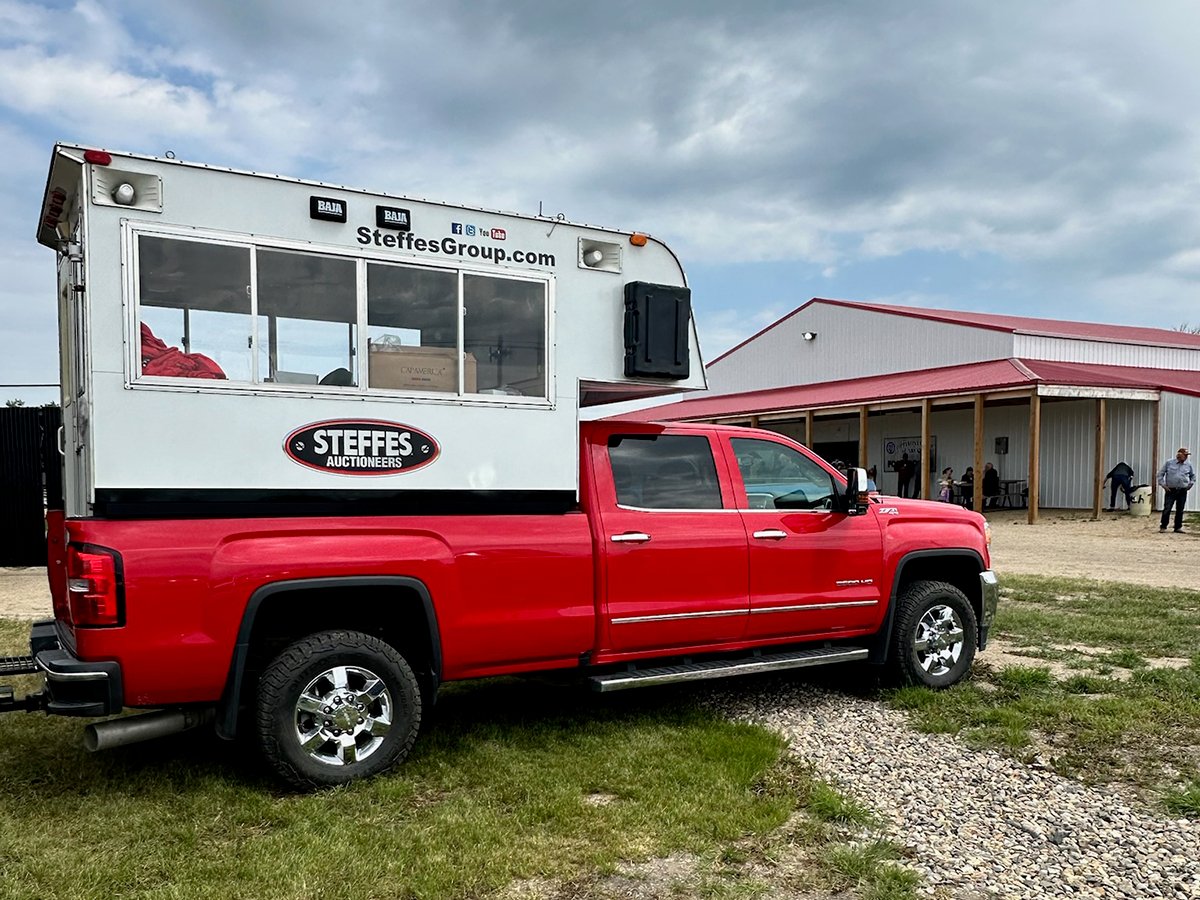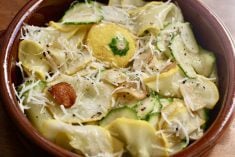We recently enjoyed attending the Saskatchewan Agriculture Hall of Fame inductions. Because my husband, Bill, was one of the five inductees, it was an especially memorable event. Our friends, family and colleagues were there to celebrate with us. There were surprises, such as the attendance of Bill’s cousins who drove from Wisconsin.
Another surprise for Bill was being presented with his restored 1957 Chevy Apache half-ton truck as an induction gift. Our son Bob had taken it to the body shop several months before. On a few occasions Bill had asked where it was and was told a few “white lies”
Read Also

Farm auctions evolve with the times
Times have changed. The number of live, on-farm auctions is seeing a drastic decline in recent years. Today’s younger farmers may actually never experience going to one.
to keep it a secret.
At presentation time, I lured Bill out on the front deck to have our coffee after dinner and then our kids drove down our street and stopped at the front door in the newly restored Apache. We certainly did surprise him. I don’t know which is more enjoyable: surprising someone or being the person being surprised.
Horseradish-spiked coleslaw
I liked this recipe because the vegetables weren’t covered in a lot of dressing. The flavour combination made a small amount of dressing go far.
1 tablespoon prepared 15 mL
horseradish
1 tablespoon honey 15 mL
1 tablespoon apple cider vinegar 15 mL
½ teaspoon salt 2 mL
½ teaspoon freshly ground 2 mL
pepper
1 tablespoon oil 15 mL
4 cups coleslaw mix 1 L
1 cup halved grape tomatoes 250 mL
½ cup diced red bell pepper 125 mL
½ cup sliced green onion 125 mL
To prepare dressing, whisk together horseradish, honey, vinegar, salt and pepper until combined. Gradually whisk in oil until blended. Combine coleslaw mix, tomatoes, red pepper and green onions in a bowl. Add dressing and toss. Serve immediately. Serves four.
Source: Everyday Delicious, ATCO Blue Flame Kitchen Cookbook, 2008.
Scalloped mushroom corn
A friend gave this recipe to me. It uses canned corn, but you could use garden corn scraped from the cob.
2 12 oz tins kernel corn 750 mL
(approx. 3 cups garden corn)
1 10 oz tin mushroom soup 298 mL
or 1 mushroom and onion soup
1 tablespoon butter or 30 mL
margarine
3 tablespoons flour 45 mL
2 eggs, beaten
buttered crumbs
Melt butter in a saucepan and stir in flour. Add liquid from the corn and the soup. Stir constantly until mixture is thickened and smooth. Add eggs, stir well and add drained corn. Put mixture in a greased baking dish. Top with buttered crumbs. Bake at 350 F (180 C) for approximately 40 minutes or until set.
Serves 4 to 6.
Mayonnaise vs Miracle Whip
A reader asked this question.
Mayonnaise (sometimes abbreviated mayo) is a thick, creamy sauce used as a condiment and salad binder. It is an emulsion of egg yolks, lemon juice or vinegar, vegetable or olive oil and seasonings. Without egg yolks, it is labelled salad dressing rather than mayonnaise.
Mayonnaise contains, by law, a higher percentage of oil by weight than mayonnaise-type salad dressings.
Miracle Whip is a salad dressing and sandwich spread invented in Salem, Illinois, at Max Crossett’s Café. Crosset sold it to Kraft Foods in 1931 for $300. It remains today a Kraft Foods product.
In 1933, Kraft was a well-established distributor of mayonnaise, yet sales were slipping as a result of the Depression.
As a result, Kraft developed a dressing that had a taste and texture similar to mayo but at a lower price.
Premiering at the Chicago World’s Fair in 1933, Miracle Whip was an instant success, helping to make fruit, vegetables and salads better tasting and more appealing to Depression-weary consumers. It was a blend of existing mayonnaise products and less expensive salad dressing.
A special machine was invented and patented to make Miracle Whip. It ensured that pre-measured ingredients (including more than 20 different spices) could continuously enter the appliance and become thoroughly whipped and blended.
On store shelves are many brands of mayonnaise and salad dressings. There are also reduced-fat, low-fat and fat-free mayonnaise readily available for those watching their diet.
Cookware myths
- Do non-stick coatings leach harmful chemicals?
Non-stick coatings are made of inert substances that do not react with food.
A chemical called perfluorooctanoic acid (PFOA), which many people worry about, is used in the production of non-stick coatings and in thousands of other products. It has been shown to be a potential carcinogen and a workplace hazard, so efforts are being made to eliminate it from manufacturing emissions and from all products.
However, there is no evidence that non-stick cookware is a significant source of PFOA. Many tests have shown that it doesn’t migrate into food, or only in the most minute amounts.
Fumes given off from non-stick cookware used at higher temperatures are harmful. Health Canada states that: “Non-stick coatings are a risk if they are heated to temperatures greater than 350 C or 650 F”.
Because we would not in normal cooking be heating to that high a temperature, there is no danger to our health. The real danger at that temperature would be a flash fire.
As a precaution, don’t use cookware with non-stick coatings for broiling or other high temperature baking and cooking. Do not leave it empty or unattended on a hot stove or in a hot oven. Empty pans can reach higher temperatures more quickly than pans containing food.
- What about chipped non-stick coatings?
There is no evidence that eating small quantities of non-stick coating that has flaked off into your food is bad for you. Even if you swallow a particle of the coating, it would pass unchanged through your body.
- A product called GreenPan claims to have a new king of “healthy” coating, called Thermolon. Is it safer?
Thermolon is a ceramic coating made of silicone, titanium and other substances. Thermolon is fine but no more healthful than other cookware.
- Is aluminum cookware harmful? What about the aluminum-Alzheimer’s link?
Aluminum cookware is a good choice. It is usually inexpensive and a good heat conductor that cooks evenly if it is heavy enough. Food absorbs small amounts of aluminum from pots while cooking. Acidic foods, such as tomatoes, absorb the most. However, there is no evidence that this is harmful.
Aluminum is widely used in various products, from cookware and food packaging to antiperspirants, cosmetics, antacids and other medicines. You absorb small amounts daily from many sources.
The Alzheimer’s Society says “that it would be difficult to significantly reduce exposure to aluminum simply by avoiding the use of aluminum cookware, foil, beverage cans and other products. Even if aluminum were clearly implicated in the development of Alzheimer’s disease, these means of exposure contribute only a very small percentage of the average person’s intake of aluminum.
“At this point, there is no evidence that aluminum increases a person’s risk of developing Alzheimer’s disease.”
Still, there’s no point in exposing yourself to large amounts of aluminum. Consider replacing worn and pitted pans. Manufacturers advise against storing acidic foods in aluminum pots, such as tomatoes, rhubarb or sauces with wine, or salty food such as sauerkraut.
- What is anodized aluminum cookware?
It is coated with a layer of aluminum oxide, which gives it a hard, scratch-resistant surface, usually black and non-stick, and the same high heat conductivity as non-anodized aluminum. It releases little aluminum, even when you cook acidic foods. It is a good choice, though some brands are expensive.
- Are copper pans harmful?
Not if properly lined. Unlined copper pans can release enough copper into food during cooking to cause nausea and vomiting. Because of this, copper and brass pans sold in Canada are coated with another metal that prevents the copper from coming into contact with food.
Coated copper cookware can lose its protective layer if scoured. If the linings wear off, you should have the pans relined.
In the past, tin and nickel were sometimes used to coat copper cookware. Such cookware should be used only for decorative purposes.
Pots with copper bottoms are fine. Like aluminum, copper is a good conductor of heat.
- What about stainless steel pans?
They are a good, practical, safe choice – easy to clean, dishwasher safe and durable. They often have an aluminum core or coating to improve conductivity. Like other cookware, stainless steel pans release minute amounts of metal, such as iron.
Sources: University of California Berkeley Wellness Letter, August 2008; Health Canada; Alzheimer Society.
Alma Copeland is a home economist from Elrose, Sask., and one of four columnists comprising Team Resources. Send correspondence in care of this newspaper, Box 2500, Saskatoon, Sask., S7K 2C4 or contact them at team@
producer.com.














